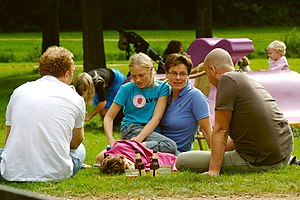
BETSY BATES writing in Internal Medicine News Digital Network from SAN DIEGO, California declares that it’s a familiar sound to neurologists, who have grown accustomed to watching the clock as they hurry to get tissue plasminogen activator on board in ischemic stroke patients.
If Dr. Steven Cramer proves correct, a second timer may soon be ticking, this one measuring in days or weeks a limited “golden” period in which combined restorative therapies and rehabilitation efforts should be initiated to achieve maximum effect.
“Therapeutic windows open and close,” stressed the University of California, Irvine (UCI), professor of neurology during a presentation at the annual meeting of the American Neurological Association.
Comparing brain plasticity after stroke to that seen in early development, Dr. Cramer emphasized the need for pairing restorative therapeutic targets with behavioral conditioning, and doing it all at the optimal time.
“It takes a lot of practice to make the brain better.”
Nature provides its own best rationale, propelling “most of the action” in spontaneous recovery within a month post-stroke, he said.
In animal models, brain response to a unilateral lesion is rapid and intense, Dr. Cramer explained.
“We see inflammation and a wealth of growth events that look very much like a developing brain. It’s an excitable brain,” ushering in building blocks for repair and regrowth of cells, dendrites, and synapses.
“Some people look at this and say these are molecular underpinnings of spontaneous recovery. Some people look at this and say, these are therapeutic targets, because if these are the components that are the backbone of spontaneous repair, amplifying these sorts of processes could lead to enhanced outcomes compared to the natural processes.”
Quickly administered stand-alone treatments have indeed been shown to mimic and expand on this natural boost to early recovery, but Dr. Cramer predicted far more will happen if active rehabilitation is added to the mix.
“When the brain is fertile to undergo repair, whatever substance you give has maximum effect if it is paired with the right kind of experience,” Dr. Cramer said.
“If you sprinkle your best restorative pixie dust on the brain, you’re not going to get the same effect as if you pair it with some kind of behavioral shaping.”
Stroke disability is one of many events or diseases that the Tutor system can be effective in restoring joint and limb movement. The newly developed HandTutor and its sister devices (ArmTutor, LegTutor, 3DTutor) have become a key system in neuromuscular rehabilitation and physical therapy. These innovative devices implement an impairment based program with augmented feedback and encourage motor learning through intensive active exercises. These exercises are challenging and motivating and allow for repetitive training tailored to the patient’s performance. The system also includes objective quantitative evaluations that provide the therapist information to customize the most suitable rehabilitation program to the patient’s ability. Currently part of the rehabilitation program of leading U.S. and foreign hospitals the Tutors are also used in clinics and at home through the use of telerehabilitation.
No comments:
Post a Comment